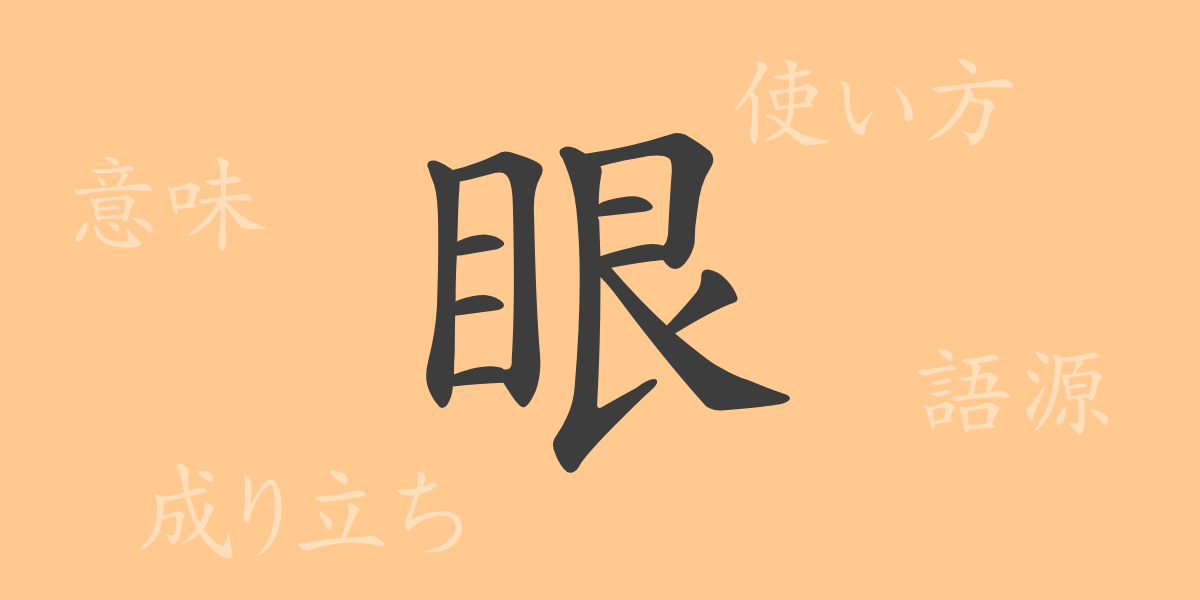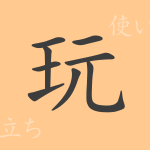The power to see the invisible, the eye. What history and meaning are imbued in this character that is deeply rooted in our daily lives? We’ll uncover the secrets hidden in Japan’s commonly used kanji “眼” (me), and delve into its allure.
The Origin (Etymology) of 眼
The character “眼” can trace its origins back to ancient Chinese oracle bone script. It is a pictograph that represents the eye, formed by surrounding the character “目” (me, eye) with “艮” (gon), emphasizing the function and meaning of the eye. “艮” also carries the meanings of stopping or ending, suggesting the final point of perception by the eye.
The Meaning and Usage of 眼
“眼” not only refers to the visual organ as an eye, but also embodies the ability to discern the essence of things and the abstract notion of being at the center of matters. It is also used in concrete terms like “眼差し” (manaza-shi, gaze) and “眼鏡” (megane, glasses), as well as abilities or senses such as “眼力” (ganryoku, power of observation) and “眼識” (ganshiki, discernment).
Readings, Number of Strokes, and Radical of 眼
In Japanese, “眼” has multiple readings.
- Readings: The on’yomi (Chinese reading) is “Gan”, and the kun’yomi (Japanese reading) is “Manako” .
- Number of Strokes: It consists of 11 strokes in total.
- Radical: The radical is “目” (me), meaning eye.
Idioms, Phrases, and Proverbs Using 眼 and Their Meanings
There are numerous idioms, phrases, and proverbs that include “眼” in the Japanese language. For instance, “眼光紙背に徹す” (gankō shihai- ni- tō-su) depicts the ability to see through to the essence of things with sharp insight, while “一目瞭然” (ichimoku ryōzen) means that something is clear at a glance. The proverb “目には目を、歯には歯を” (me- ni wa -me- wo- ha- ni wa- ha- wo) represents the ancient principle of law that justifies revenge or retribution, ‘an eye for an eye, a tooth for a tooth’.
Conclusion About 眼
The single character “眼” carries deep meaning, reflecting both the visible world and the invisible world of the mind. It serves as a symbol of our sensory organs, as well as our inner insight and spirituality, influencing many cultures and languages throughout history. How we perceive and use “眼” in our daily communication is deeply connected to our own expressive abilities.

























